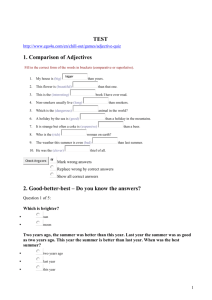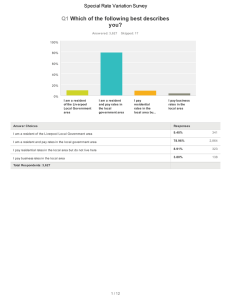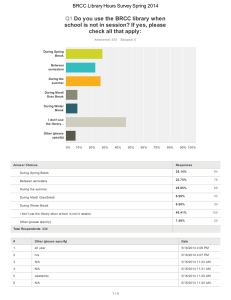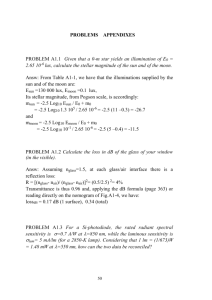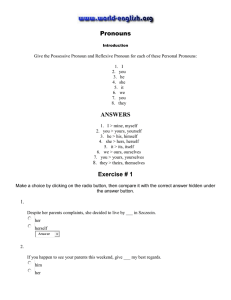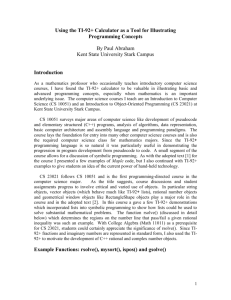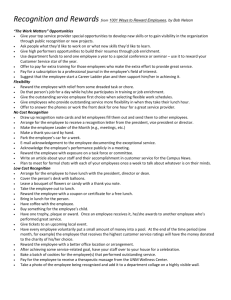RISK ANALYSIS & MANAGEMENT NOV 2013
advertisement
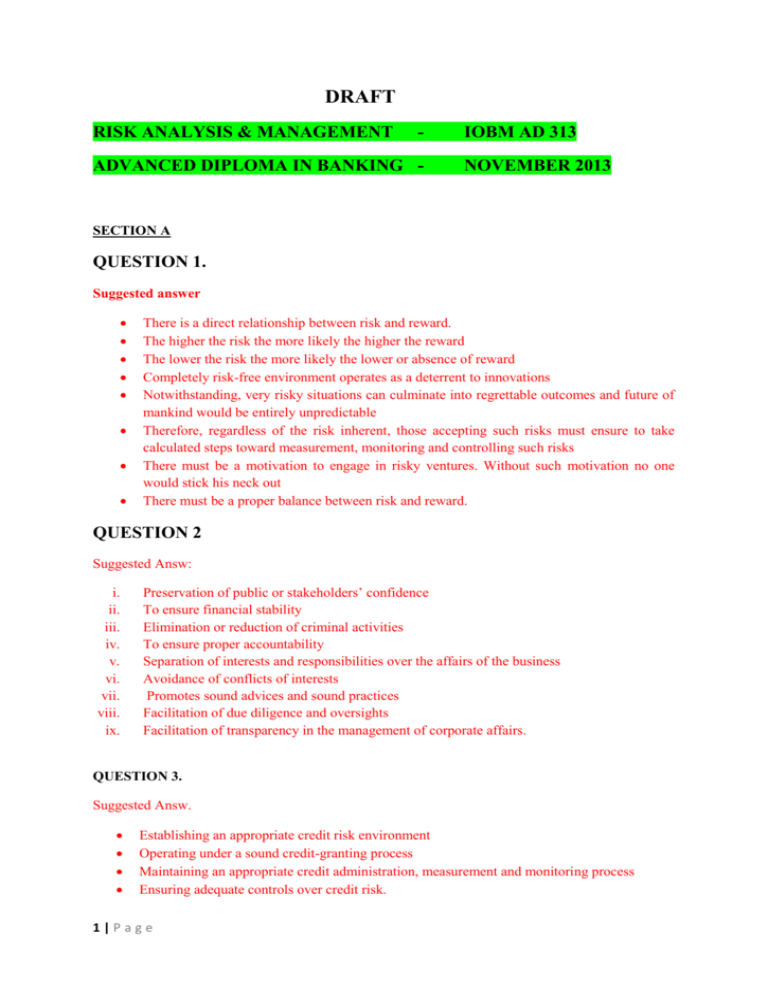
DRAFT RISK ANALYSIS & MANAGEMENT - ADVANCED DIPLOMA IN BANKING - IOBM AD 313 NOVEMBER 2013 SECTION A QUESTION 1. Suggested answer There is a direct relationship between risk and reward. The higher the risk the more likely the higher the reward The lower the risk the more likely the lower or absence of reward Completely risk-free environment operates as a deterrent to innovations Notwithstanding, very risky situations can culminate into regrettable outcomes and future of mankind would be entirely unpredictable Therefore, regardless of the risk inherent, those accepting such risks must ensure to take calculated steps toward measurement, monitoring and controlling such risks There must be a motivation to engage in risky ventures. Without such motivation no one would stick his neck out There must be a proper balance between risk and reward. QUESTION 2 Suggested Answ: i. ii. iii. iv. v. vi. vii. viii. ix. Preservation of public or stakeholders’ confidence To ensure financial stability Elimination or reduction of criminal activities To ensure proper accountability Separation of interests and responsibilities over the affairs of the business Avoidance of conflicts of interests Promotes sound advices and sound practices Facilitation of due diligence and oversights Facilitation of transparency in the management of corporate affairs. QUESTION 3. Suggested Answ. Establishing an appropriate credit risk environment Operating under a sound credit-granting process Maintaining an appropriate credit administration, measurement and monitoring process Ensuring adequate controls over credit risk. 1|Page QUESTION 4. Suggested Answ. Advantages: i. ii. iii. iv. Buyer knows at the outset what the worst case will be Ideal for hedging contingent cash flows which may or may not materialize e.g. tenders Provides a flexible means of currency cover Does not require margins to be set aside in order to cover the exposure. Disadvantages: i. ii. iii. Are expensive, especially when commissions are taken into account Available to only a limited range of currencies Expiry dates and strike prices are standardized and may not be ideal for a particular situation. SECTION B QUESTION 5 (a) i. ii. iii. iv. v. vi. vii. viii. ix. x. xi. xii. xiii. Suggested Answer: Lack of back-up operations in separate locations If all operations concentrated in the same building Decisions or indecisions at the appropriate time Business cycles/ seasonality Economic/ fiscal changes of government policies Market preferences as they change with times Political compulsions i.e. govt directives to enter into risk exposures Competition leads businesses to throw off board precautionary measures Technology is both a solution and a cause of risk Non availability of information for rational decision making Lack of contingency plans for catastrophies Poor controls Fraudulent activities both internally and externally oriented. (b) TO PRODUCE AN ANSWER QUESTION 6 Suggested Answ: Management and staff must have latitudes of control over the affairs of the business to the extent possible so that they can avoid seemingly lucrative but dangerous (risky)ventures How much control one has in the execution of duties determines the way forward and assumption of accountability Where fear and lack of control are both high, the risk is perceived as high. It leads to lack of objectivity and careful analyses of risks 2|Page Sometimes resources and/or competence levels might be lacking but nonetheless on is driven into such activities or decisions for fear of failure Very often there are no measures put in place to mitigate risks – the motivation is to please out of fear, those that impose high tasks/targets on you What is not understood, however, is that where control is greater and fear of outcome is lower, there results a less likelihood of perceived risk. Outcomes might be generally acceptable albeit not ambitiously at the level sought Controlled people take risks for which they may not be equipped Nonetheless, no organization can afford to operate on a laissez-faire basis and expect to succeed. There must be in place some degree of control and expectations of consequences when desired achievements or objectives are not met It is really a question of balancing the act:- how much control should be exercised and the level of outcomes that can equitably or ethically be generated by those that we have been given charge to manage You cannot expect to achieve the impossibles even if you threaten with reprisals those that are expected to achieve results. Rather, dangle the carrot in front of their noses and let them devise ways and means, through motivational factors, of how to achieve and ultimately take a bite at the carrot! What needs to be established are levels of responsibilities and, above all, accountability for results. QUESTION 7. Suggested Answer: a) Any of the following definitions will suffice The risk that interest rates paid to depositors and yields earned from loans might change with varying degrees of uncertainty The impact on the net interest earning as a result of increases or decreases in levels of interest rates The potential for the bank earnings volatility and declines in the market value of its equity as a result of changes in interest rates in the economy/ market b) It is a major risk exposure for banks It forms part of the bank’s ALM Defaults or arrears in interest can make an otherwise good lending book to increase and become toxic and hence partially uncollectable Its effective management determines the bank’s overall profitability Sometimes failure to pay interest on depositors’ funds can lead to a bank on-the-run ie. Flight of depositors to other banks It is the basis upon which the pricing of its loan products is made Forms the basis upon which a bank manages its sources and uses of funds Helps to set an appropriate level of tolerance and/or appetite for banks 3|Page QUESTION 8 Suggested Answ: Causes Deficiencies in information systems or internal controls Unsound marketing practices Pre-mature new products of line of business Unsound procedures faulty documentations lack or absence of contingency plans breakdown in internal monitoring mechanisms malfunctioning of information systems absence of rules/regulations errors in the process of recording transactions Mitigating strategies supervision and control of the highest order training of personnel regular internal and independent audits development of personnel policies with ethical codes constant training on risk management 4|Page
